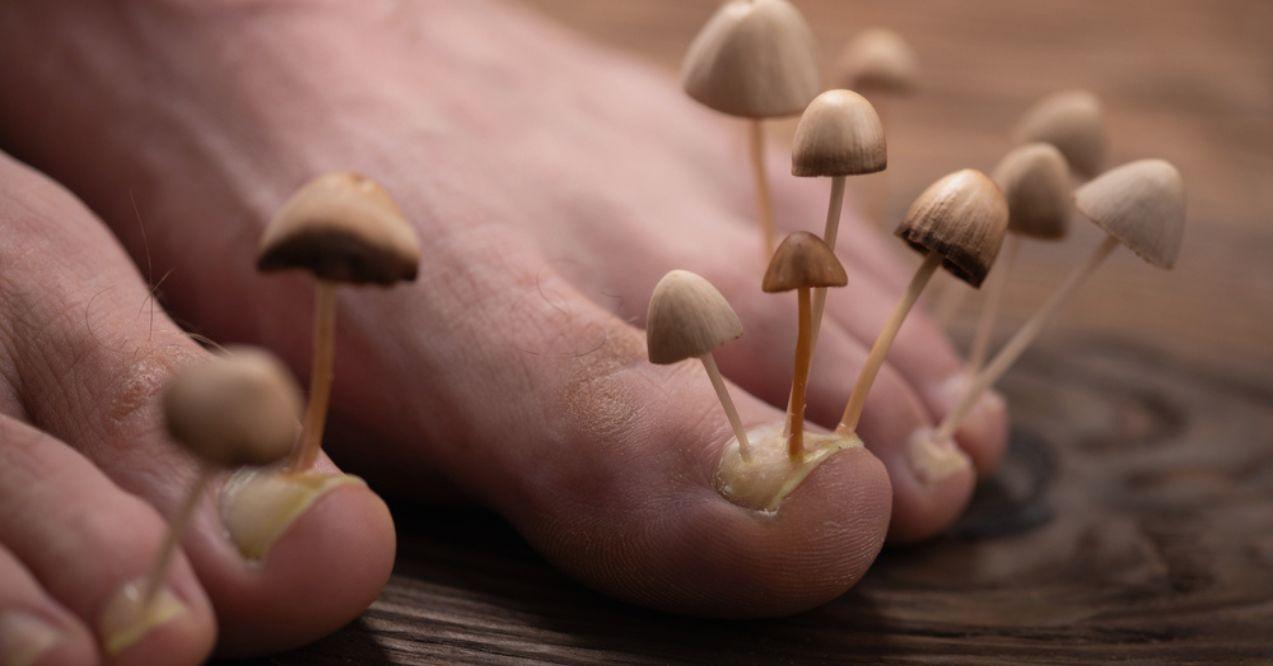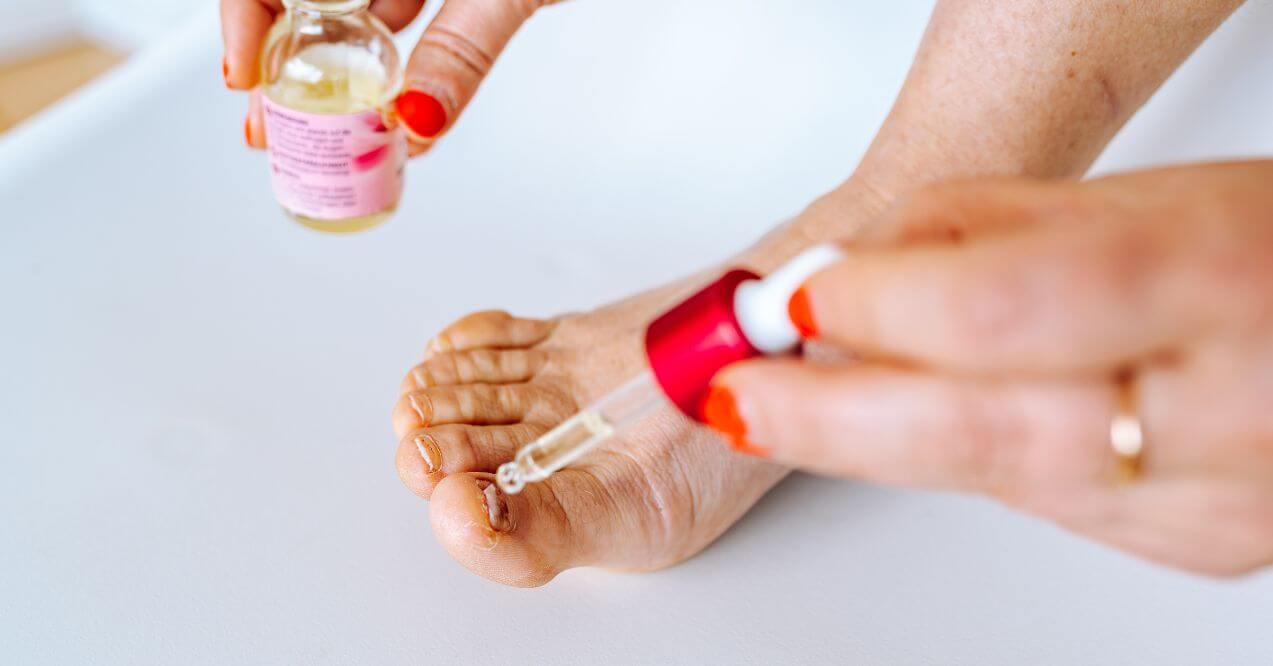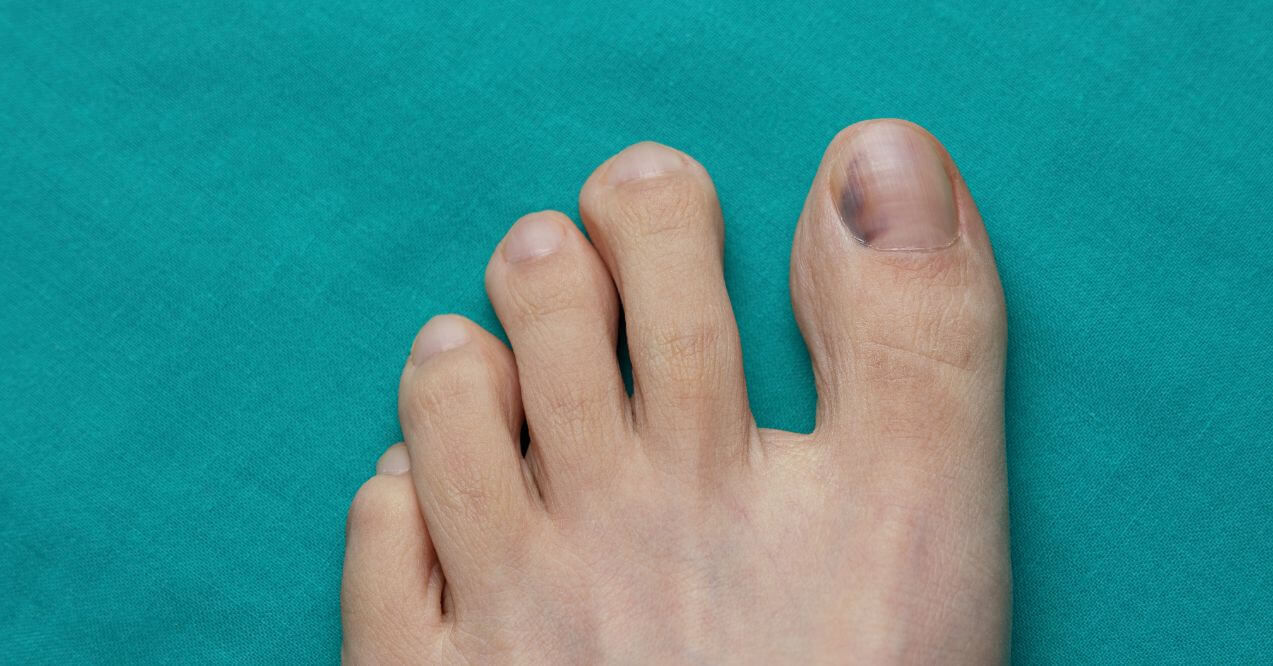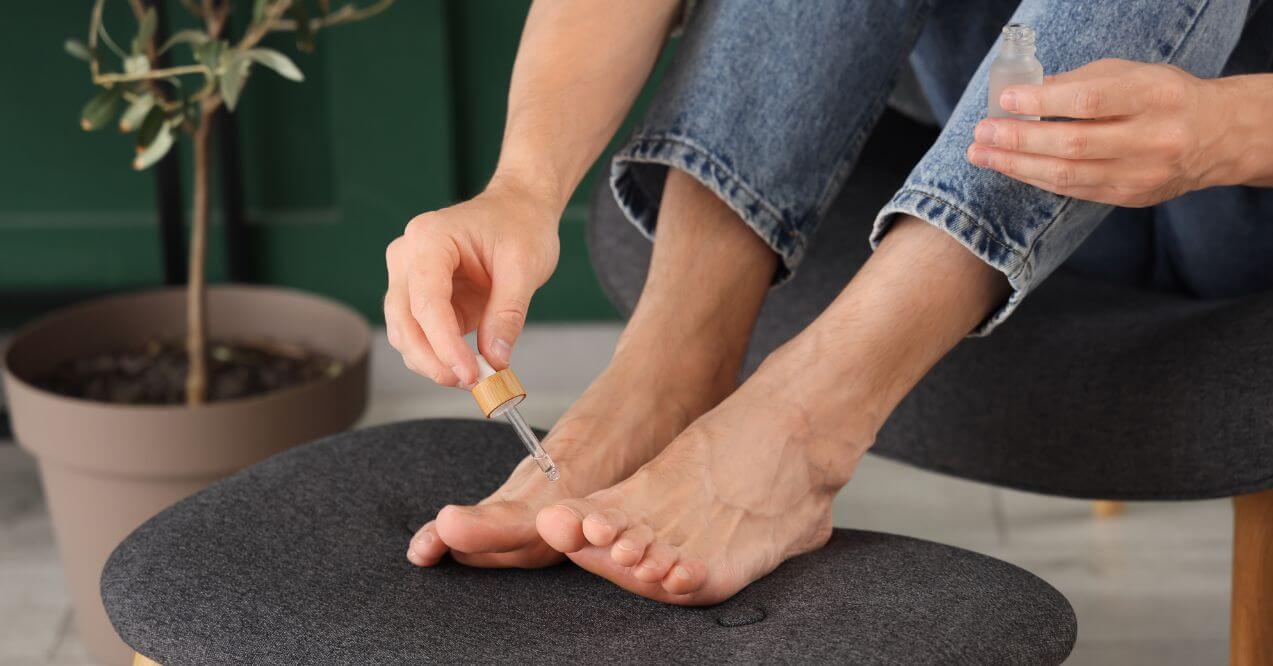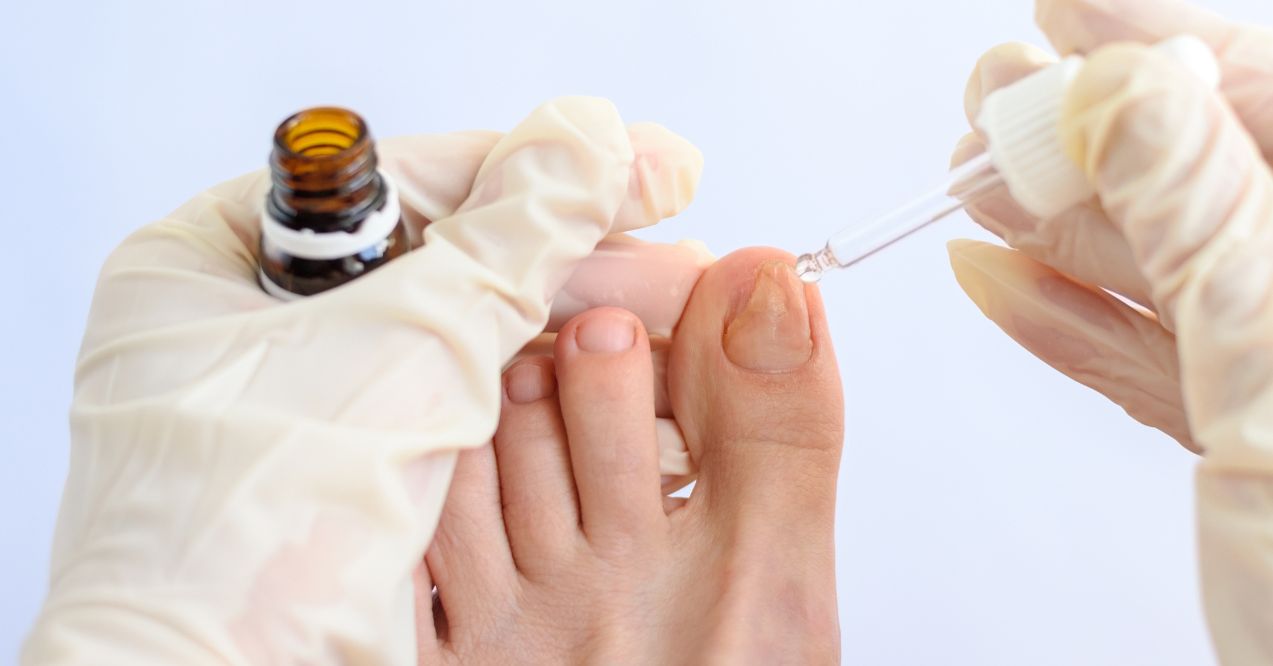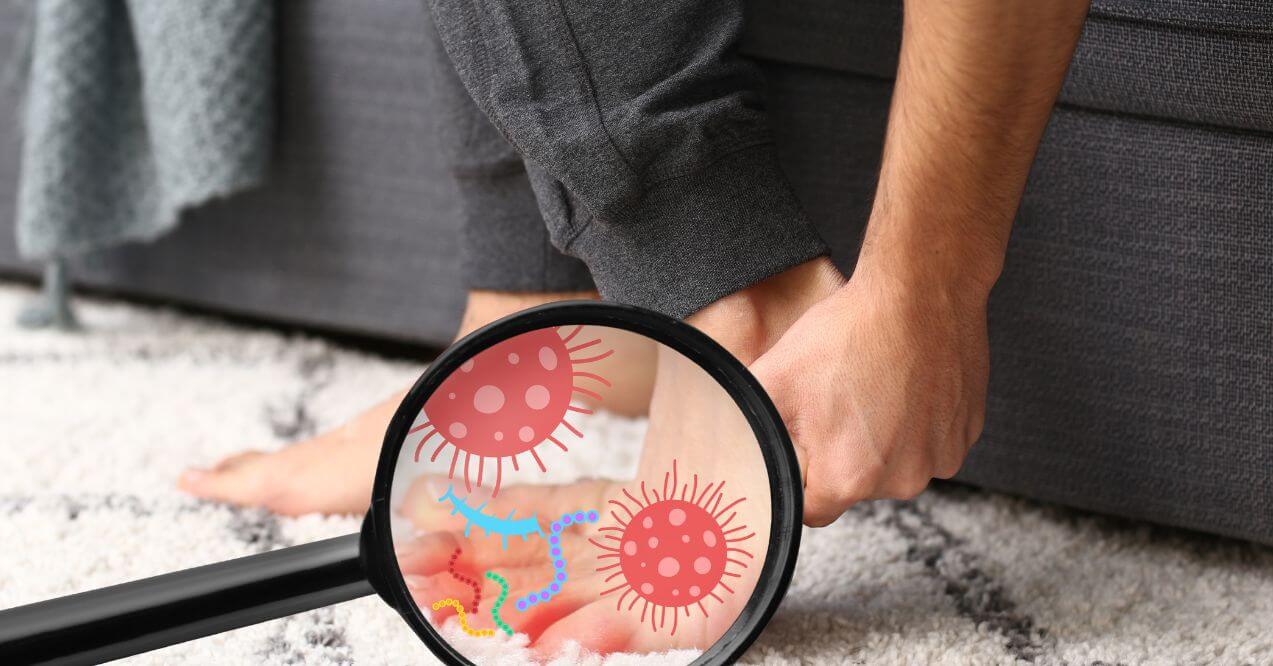Different Types of Toenail Fungus
Medically reviewed by our experts
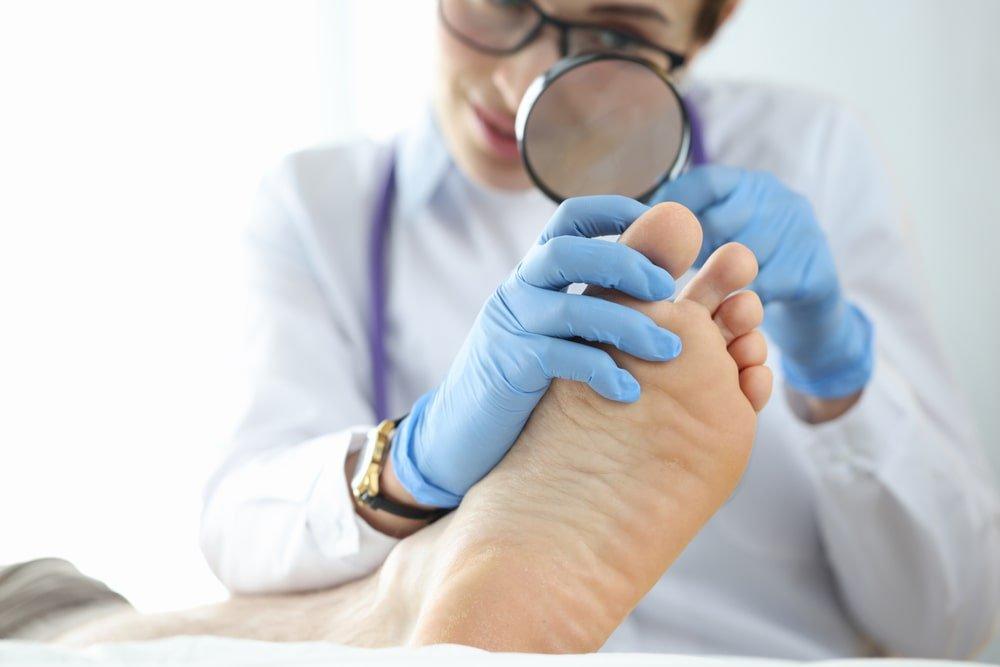

What do you know about the different types of toenail fungus or various types of foot fungus? Most people have little knowledge until they or someone in their family ends up affected. It’s time to get a better understanding of exactly what it is and the best ways to treat it.
Another term for toenail fungus is onychomycosis, and it refers to any sort of fungal infection that occurs under at least one toenail. Typically, the infection is going to start small and can be difficult to notice. It begins as a small spot, generally white or yellow, and it often occurs just beneath the tip of the nail. It can go deeper, and in serious cases, it could cause someone to lose their toenail.
While these nail infections and fungi can grow on the fingernails, they are more common on the toes. This is because the feet are often kept in socks and shoes, which can create a dark and damp environment. It provides the perfect conditions for fungus to thrive.
Some of the common types of symptoms associated with toenail fungus include a white or yellow discoloration of the nails, thickened nails, misshaped nails, an odor, and brittle or ragged nails.
What Are the Different Types of Toenail Fungus?
There are three different types of toenail fungus. They include subungual onychomycosis, white superficial onychomycosis, and candida onychomycosis. Let’s get a closer look at each of these.
Subungual Onychomycosis
Subungual onychomycosis—while the term itself may sound intimidating, it’s quite simple when broken down. ‘Subungual’ refers to beneath the nail, while ‘onychomycosis’ is the medical term for a nail fungus infection. This particular type of toe fungus is instigated by dermatophytes, a specific class of fungi.
Fungi, as you may know, are opportunistic organisms that thrive in warm, moist environments, including places like your shoes or the floors of public showers and pools.
Subungual onychomycosis is akin to the fungus causing Athlete’s Foot, making it equally challenging to treat due to its under-the-nail location. Infections typically begin at the nail’s base or underneath, spreading over time to potentially affect the entire nail or other nails.
Untreated, it can lead to nail discoloration, distortion, discomfort, and pain. But worry not—it’s treatable, with options ranging from over-the-counter remedies to prescribed medications and, in extreme cases, surgical interventions. The key to successful treatment is early detection and prompt attention.
White Superficial Onychomycosis
White superficial onychomycosis is another common type of nail infection, brought about by specific fungi—primarily acremonium or fusarium. As the name suggests, ‘white superficial’ points to the infection’s unique characteristic—it impacts only the top layer of the nail, leaving the underlying structures untouched.
You might first notice this infection as innocuous white spots on your nail’s surface. However, without timely treatment, these small spots can gradually expand, covering the entire nail with a rough, crumbly white surface. Although not as invasive as some other types of fungal infections, white superficial onychomycosis can still lead to nail thickening and cause a cosmetic concern, which may impact self-confidence.
Interestingly, this fungal infection stands out as the easiest to treat among nail fungal infections. The reason for this ease is its surface-level impact. Because the infection dwells on top of the nail, treatments—be it topical antifungal creams, lacquers, or oral medications—can reach the fungus directly, facilitating faster and more effective results.
Still, it’s essential not to take white superficial onychomycosis lightly, considering it as merely a cosmetic issue. Instead, view it as a wake-up call—a sign that your nails, like every other part of your body, require care and attention. By practicing good hygiene, maintaining a well-balanced diet, and treating infections promptly, you can ensure the health and beauty of your nails for years to come.
Candida Onychomycosis
Candida onychomycosis is a less common nail fungus caused by candida, a yeast naturally present in our bodies. This yeast infection typically affects fingernails and the surrounding skin, leading to a condition known as paronychia. It’s particularly common in people frequently exposed to water, providing an ideal environment for yeast.
The intriguing aspect of candida onychomycosis lies in the very nature of candida. This yeast is a part of our normal flora, coexisting peacefully with other microorganisms in our bodies under regular circumstances. However, when given a conducive environment—like a weakened immune system or a disruption in the body’s natural balance of microorganisms—it can grow out of control, leading to an infection.
Unlike other types of fungal nail infections that mainly impact the toenails, candida onychomycosis has a peculiar preference for the fingernails. It also has a unique propensity to affect not just the nail but also the adjacent skin area known as the nail fold. When infected, this results in a painful condition called paronychia, characterized by redness, swelling, and discomfort in the nail fold area.
Treatment may be challenging due to yeast’s resilience, requiring antifungal medications or, in severe cases, nail removal. Remember, prevention starts with good hygiene and a healthy lifestyle to avoid such infections.
Is Toenail Fungus Painful?
Most of the time, regardless of the different types of toenail fungus someone has, they aren’t painful in the beginning. Because there is no pain, and it can be difficult to notice at first and it is easy for it to start to spread before being treated. Quite often, someone could be living with a fungal infection of their toenails for weeks without realizing there is anything wrong.
The longer the infection persists without any sort of treatment, the more it is going to spread. Those who do not check their feet and toenails very often may well go weeks or longer without noticing any issues. When the fungus continues to spread, the affected nail will grow thicker and brittle. It can also start to change shape. At this point, it can start to cause some serious pain.
The condition can get worse until it becomes hard to wear shoes. The toenail might eventually fall off.
One of the other questions that often gets asked regarding toenail fungus is whether it is contagious or not. You will find that it can be, as long as the conditions are right. Remember, to have a fungal infection, you typically need to have moisture and darkness. This will increase the chance of getting the fungus.
If you are in an environment conducive to the fungus and someone else has it, then it could spread to you if you come into contact with the fungus or items that have been in contact with the fungus. The same is true for most different types of toe fungus, such as Athlete’s Foot.
Something else that can increase the chance of getting an infection is having a weakened immune system. This is because it is harder for the body to attempt to fight off the fungus.
You will want to keep in mind that toenail fungus does more than just cause unsightly toenails and some pain. There are complications and risk factors with toenail fungus, too. They could be an indicator of other health problems you are facing.
Peripheral vascular disease and diabetes both can cause reduced blood flow to the extremities. When going through antifungal therapy, it could mean you will need a longer course of treatment for it to work properly. Physical trauma could also cause more issues.
If there is damage to the feet or the toes and nails, they might take longer to heal, and it could make it easier to get fungal infections in the first place.
Treat Toenail Fungus With Dietary Supplements
Toenail fungus can cause more than just yellow, brittle nails—it can lead to irritation, embarrassment, and in some cases, more serious health concerns if left untreated. Fortunately, supplements for toenail fungus offer a comprehensive approach to help address fungal infections from within, supporting both nail health and immune function.
These supplements are carefully formulated with powerful blends of natural ingredients and immune-boosting botanicals designed to fight fungus systemically—reaching areas topical treatments may not.

The effectiveness of these supplements lies in their unique combination of high-quality plant extracts and nutrients, including:
- Wormwood: Known for its anti-fungal properties, wormwood can shield you against several fungus strains and help ward off infections.
- Caprylic Acid: This fatty acid derived from coconut oil can rapidly attack and eliminate invading fungus, often within mere minutes.
- Turmeric: A well-known superfood, turmeric is included for its ability to boost healthy immune function and provide an extra line of defense against infection.
- Bioperine®: This patented black pepper extract enhances the immune benefits derived from turmeric, making it even more potent in your fight against fungus.
These are just a few of the ingredients often found in toenail fungus supplements. Each dose delivers these targeted compounds to help promote clear, strong, and healthy nails naturally.
Final Thoughts
Regardless of the different types of toenail fungus you may have, it is important to get it treated right away. The sooner you take care of the issue the better. Take good care of your feet and make sure to inspect your toenails at least once a week. When you cut your nails, you should check for those little white and yellow spots, as well as any thickening of the nails that could indicate fungus. If you notice any issues, make sure you start handling the nail fungus before it gets worse.
Toenail fungus appears in different forms. Distal subungual onychomycosis (DSO) starts at the tip, while white superficial onychomycosis (WSO) causes white patches on the nail. Proximal subungual onychomycosis (PSO) begins at the base, and Candida infections can thicken and discolor multiple nails. A doctor can confirm the type with lab tests.
Conditions like nail psoriasis, bacterial infections, trauma, eczema, and lichen planus can resemble toenail fungus. Discoloration or thickening may also result from injury or medication reactions. A professional diagnosis is the best way to confirm the cause.
Fungal infections cause thick, brittle, discolored nails and develop slowly. Bacterial infections are often red, swollen, painful, and may produce pus, usually from an injury. If symptoms worsen or include drainage, seek medical attention.
Popular Articles
Advertisement. This site offers health, wellness, fitness and nutritional information and is designed for educational purposes only. You should not rely on this information as a substitute for, nor does it replace, professional medical advice, diagnosis, or treatment. If you have any concerns or questions about your health, you should always consult with a physician or other health-care professional. Do not disregard, avoid or delay obtaining medical or health related advice from your health-care professional because of something you may have read on this site. The use of any information provided on this site is solely at your own risk.




